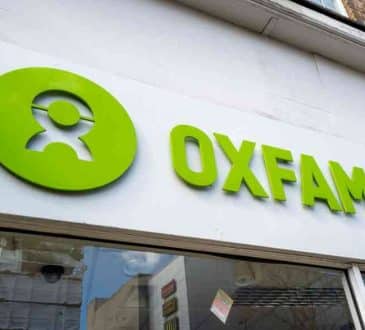Evaluating Marketplace Opportunities

Not all marketplace opportunities are equal in terms of potential growth and size. Some like eBay grew rapidly from inception whereas some like DoorDash took much longer to grow into a dominant market position. This article will help you sort out which marketplace ideas have the best opportunity to become massive opportunities.
Technology Platform Change
A change in the technology platform is a prime opportunity to displace incumbents in the space. Generally, incumbents are slow to adopt a new platform and are, therefore, ripe for disruption. A prime example is OfferUp, which allows users to buy and sell used goods. They were successful in disrupting Craigslist which was the 800-pound gorilla in the space.
OfferUp was able to leverage the market transition to mobile by making it very easy for users to take pictures of used items that they wished to sell. Users could also instantly communicate with each other by leveraging the instant messaging capabilities that the OfferUp app provided. In contrast, Craigslist didn’t have a mobile app for a long time, making it difficult for people to upload their pictures.
Users communicated using email where responses took much longer compared to the instant messaging capability of OfferUp. Similarly, Uber also leveraged the move to mobile to make it very easy for users to hail a ride and view the progress of the ride on their phone. No such capability existed for hailing rides when Uber and Lyft launched in the US.
Innovative experiences
Innovative marketplaces don’t just connect consumers with suppliers in the offline world, they deliver entirely new wow experiences that didn’t exist before. A prime example of that is Uber, which made it possible for a consumer to hail a ride to pick them at any location from their smartphone. This was simply not possible before the advent of smartphones.
You had to call a taxicab company and wait potentially for a half hour to get a ride. Not surprisingly, Uber and Lyft have disrupted in the taxi industry in a massive way. Another great example is OpenTable which made it possible to browse hundreds of restaurants in a city and make the reservation instantly on your smartphone. This capability simply did not exist before. It saved users the hassle of calling many different restaurants to make a reservation that met their dietary needs and schedule requirements.
Large number of Suppliers
Multi-tenanting is much more likely to take place in marketplaces that have a small number of suppliers. As we had discussed earlier, multi-tenanting makes it much harder for network effects to take place. It also makes it much easier for new competitors to emerge that can easily recruit your supplier network.
A good example of this phenomena are food delivery apps where it is easy for a new food delivery app to sign up a limited number of restaurants that exist in a city. Ride sharing is another area where multi-tenanting is common which has resulted in fierce wars between various ride sharing companies such Uber and Lyft in the US and Uber and Didi Chuxing in China. In China, Uber finally had to exit the market by selling its ride sharing service to Didi Chuxing as it became financially too challenging to continue competing in the Chinese market.
High Multi-tenanting Costs
If suppliers have to incur a high cost to join a marketplace, it will discourage them to multi-tenant and join other competitive marketplaces. A good example of this phenomenon is OpenTable which costs $1,200 to join along with a $199/month fee. It becomes expensive, therefore, for restaurants to join a competing offering. In addition, it is also challenging to have two reservation management systems managing the same set of tables. On the other hand, for ride sharing apps, it is very easy for drivers to be on multiple systems simultaneously and respond to whichever app hails them first for a ride.
Economic Advantages
Marketplaces that confer significant economic advantages to both consumers and suppliers will do significantly better than other marketplaces. A good example is Real Real which is a marketplace for brand name used clothing. It makes it possible for sellers to monetize their wardrobe and for consumers to purchase high quality clothing that is considerably cheaper than buying brand new clothing. Another example is Airbnb where vacation homeowners can monetize idle homes or extra rooms in their home. In return, consumers get to travel at a much lower cost compared to staying in expensive hotel rooms.
Value Add through Technology
Marketplaces that leverage technology to add significant value can expect to do well. A prime example is Zillow, which provides the now famous “Zestimate” for each home in the US using data that was previously held in proprietary databases. If you are traveling looking for homes, it leverages GPS to give you the Zestimate of the home you may be looking at. Similarly, Uber leverages GPS technology to give you an accurate sense of how many cars are near you and how much time it will take for a car to pick you up. Once you hailed a ride, you can view the progress of the car on your map in real time.
Market Expansion
Marketplaces that expand the TAM (Total Available Market) are likely to grow into much bigger market opportunities. Uber is a perfect example of this phenomenon. It not only disrupted the taxi industry, it also vastly expanded the market with its lower pricing and ubiquity of drivers. As more drivers enter the supply chain, more consumers are attracted to the solution allowing Uber to further lower its prices. This has created a virtuous cycle that has vastly expanded the market allowing Uber to command a $50+ billion market valuation. Similarly, eBay vastly expanded the “flea market” that existed in the physical world allowing people to sell collectibles and used goods to other users anywhere in the US and in many other countries.
Frequency of Interaction
A higher frequency of interaction is clearly better economically for a marketplace. Branding and word of mouth is significantly better for high frequency marketplaces. Yelp, Uber, DoorDash are all examples of high frequency marketplaces that have done extremely well. On the other hand, marketplaces for weddings or movers are unlikely to be economically as strong because the needs are so infrequent. In addition, if the relationship with the supplier is non-monogamous all the better. For example, if I find a dog walker to walk my dog, after I have found someone trustworthy, I don’t really need to go back to the marketplace to fulfill additional interactions.
This piece is adapted from “Winner Takes All: Case Studies in How Online Marketplaces Are Creating Modern Monopolies” by Shirish Nadkarni.
Written by Shirish Nadkarni.
Have you read?
The Global Passport Index: The World’s Most Powerful Passports.
Countries With The Most Billionaires, 2023.
Top CEOs in Switzerland, 2023.
Biggest banks in the world, as measured by total assets, 2023.
The World’s Richest Self-Made Women, 2023.
Ready to join the CEOWORLD magazine Executive Council– Find out if you are eligible to apply.
Add CEOWORLD magazine to your Google News feed.
Follow CEOWORLD magazine headlines on: Google News, LinkedIn, Twitter, and Facebook.
Copyright 2024 The CEOWORLD magazine. All rights reserved. This material (and any extract from it) must not be copied, redistributed or placed on any website, without CEOWORLD magazine' prior written consent. For media queries, please contact: info@ceoworld.biz








